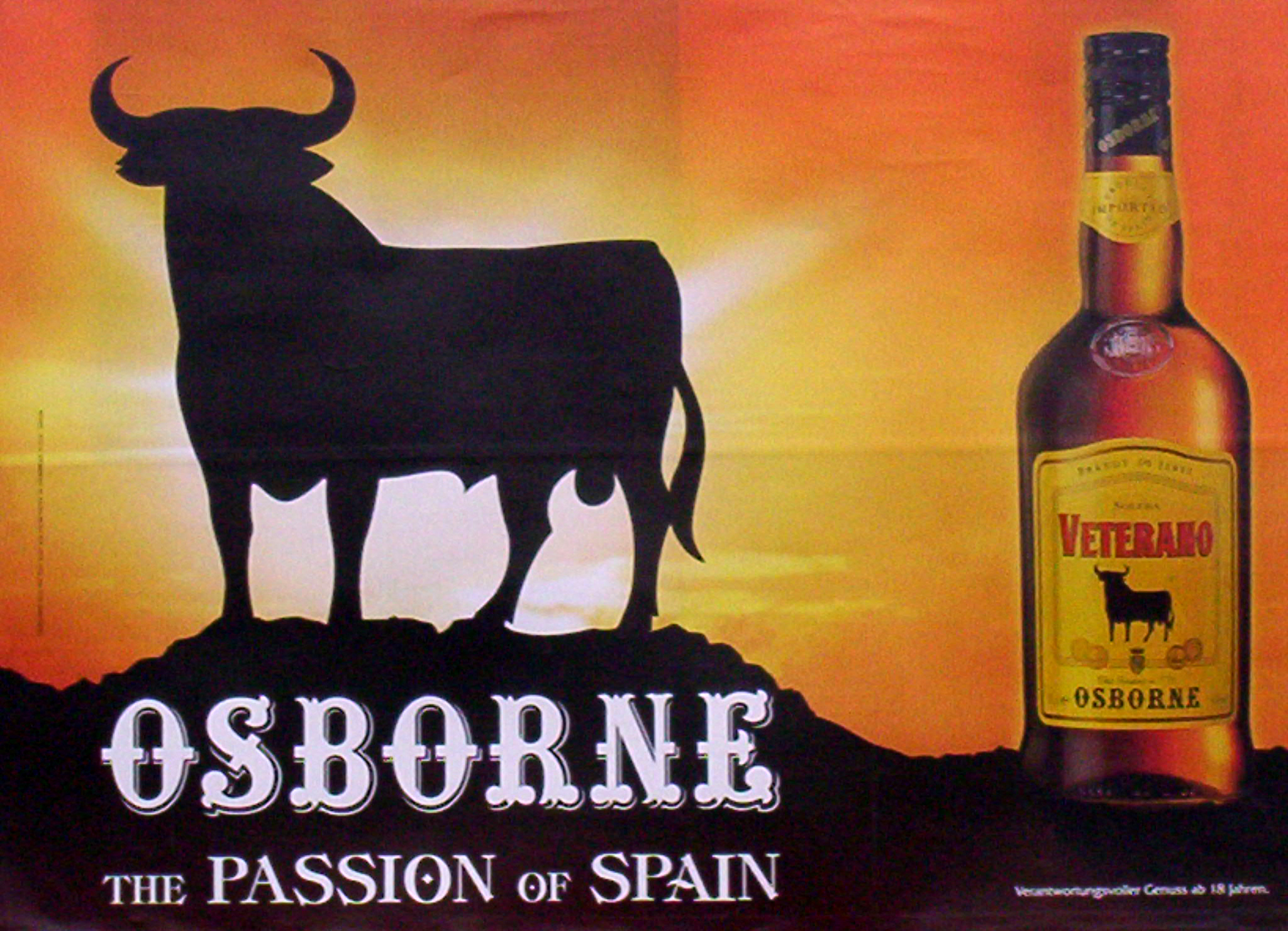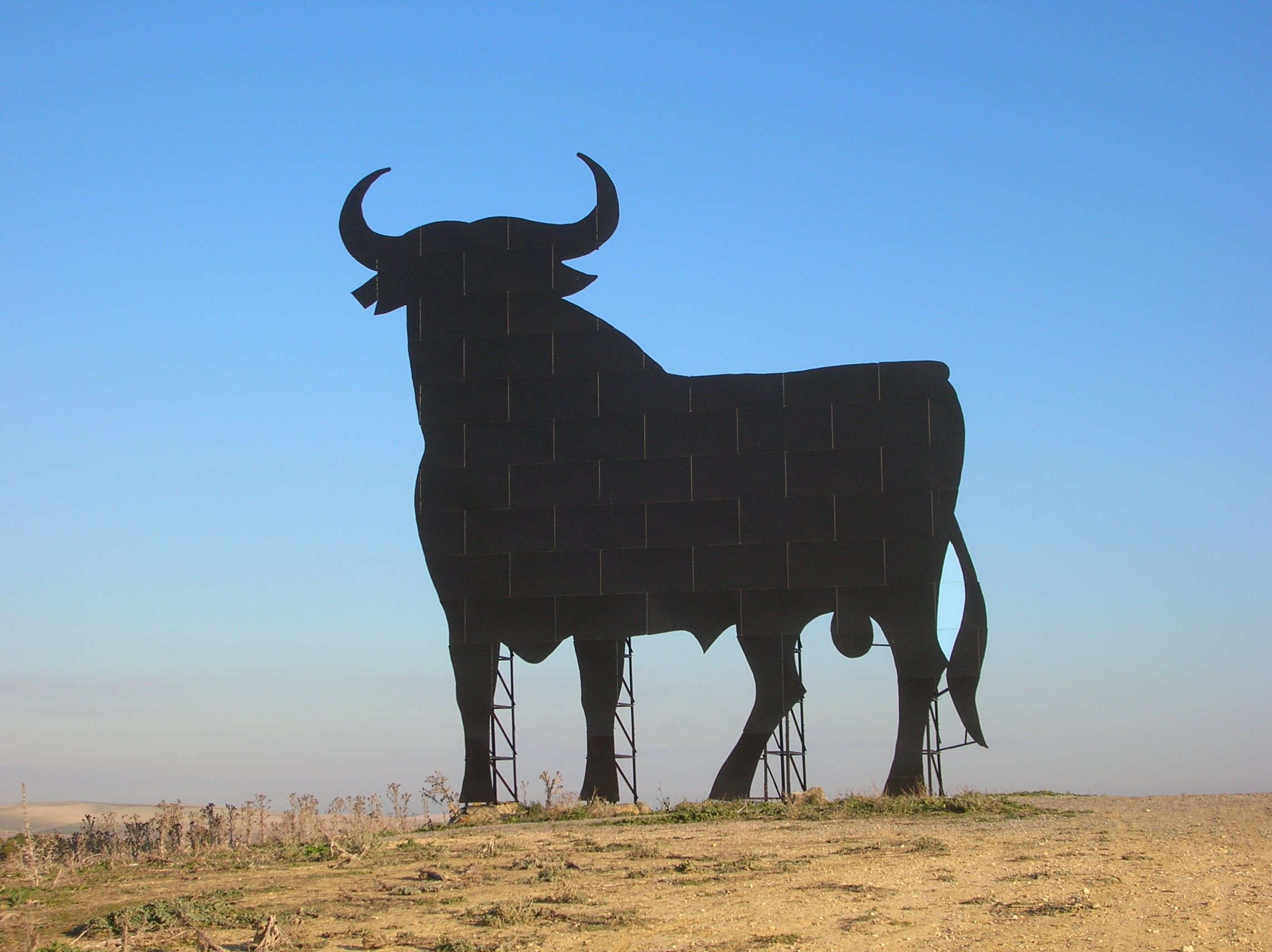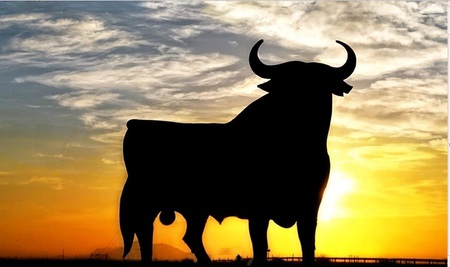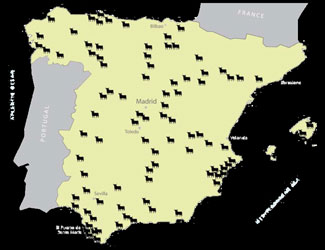Ever wondered why there are bulls dotted around the the Spanish Countryside?
 If you’ve been to Spain, you’ll have seen the massive black Osborne bulls dotted around the landscape. Perhaps you’ve wondered what they’re doing there or where they came from. Here is a brief history of the Osborne bull, for those that are curious…
If you’ve been to Spain, you’ll have seen the massive black Osborne bulls dotted around the landscape. Perhaps you’ve wondered what they’re doing there or where they came from. Here is a brief history of the Osborne bull, for those that are curious…
1956 saw the birth of a singular icon, a majestic black silhouette designed by the artist Manolo Prieto. Osborne sought with it a visual representation of the Veterano brand (Brandy style drink), but ended up creating a symbol for eternity.
In 1957, just one year after the bull’s creation, the first bull billboard is produced and appears along a major Spanish road. As the years passed these bull started popping up all over the country. By 1964 over 500 bulls dotted the roads all over Spain, each one measuring more than 14 metres in height. In 1983 the bull was decorated by the American artist Keith Herring and was son to become an example of contemporary art.

However in 1988 a new law was to come into effect, prohibiting all advertising visible from public highways, thus endangering the very existence of the classic Osborne bull, which by now had become a symbol rather than an advert. The court proceeded to order the removal of all th bulls around Spain. This causes an unprecedented popular movement causing the Supreme Court to “pardon” the Osborne bull by the undeniable social interest, cultural and artistic Toro silhouette. According to the judgment itself, the Osborne bull “exceeded its initial advertising sense and has been integrated into the landscape.” Although all brand names and texts are to be removed, the bull itself remains. Its brand status is also recognised, a registered trademark over which Grupo Osborne S.A. has the sole and exclusive usage rights.


It has received numerous awards and has been the focus of numerous cultural and artistic activities. In 2000, it received the AUS Award and in 2003 the Development and Decorative Arts partners chose it as the most representative design of the twentieth century. It has recently been decorated and interpreted by 50 international personalities on the occasion of its 50th anniversary. It has also been featured in numerous exhibitions devoted to graphic design. Today, the Osborne bull remains and outstanding and enduring element of the Spanish countryside, but how are they made?
The Osborne bull starts on paper and is later designed on a huge fence. The original “Toros” were originally made out of wood but its little resistance to the climate made Osborne change them to metal. This figure has a weight of 4,000 kilos, a height of 14 meters and an area of 150 m2.

Installation is a true engineering work of art: preparing the metal anchor turrets holding the figure, with 6 m3 of concrete. To assemble the pieces, over a thousand holes are made for fastening double nuts, it ends with no less than 50 kilos of paint.
Since 1962, Osborne’s Marketing and Communications department maintains the bull silhouettes of which there are now 90 dotted around the country.